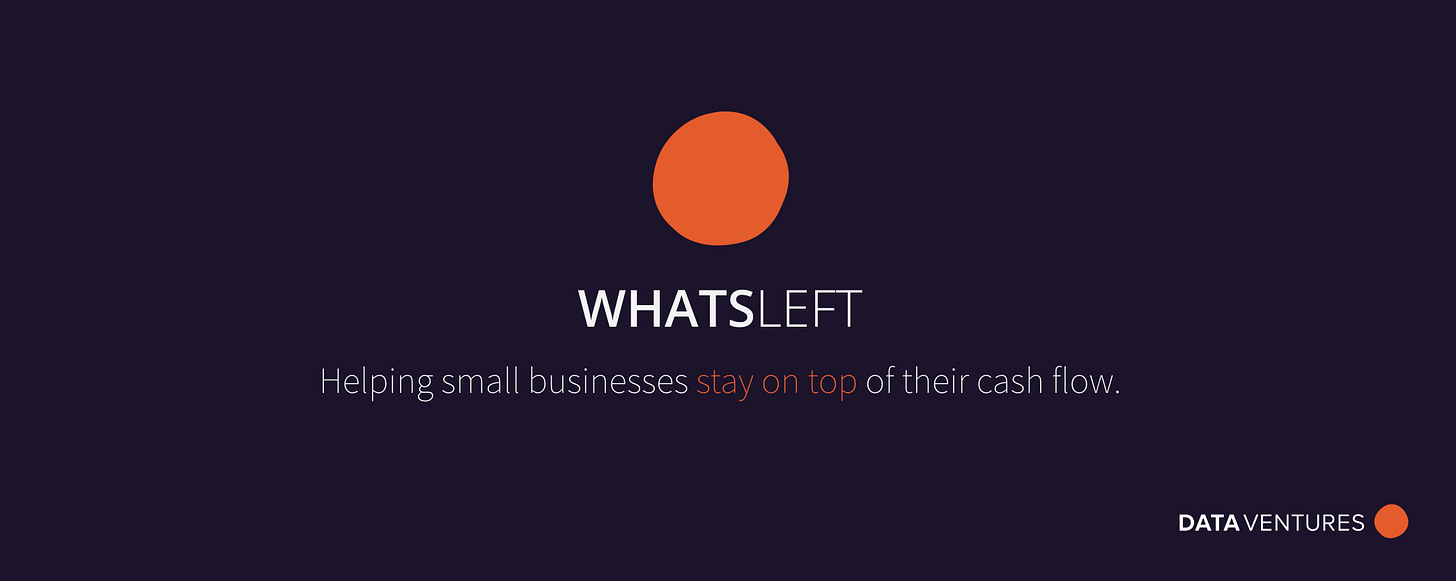What's left in 2018?
Usable Balance was inspired by an impactful need for helping small business understand cash flow to keep them afloat. However, 2018 was still not the right time.
Continued from this previous post.
In the first period of Data Ventures @ Stats NZ, we spent a lot of time validating opportunities that could be focused on as our key product/service.
I explored various channels to identify what people have seen as opportunities for Stats NZ to innovate, deliver or make available.
The channels were vast, around 15, from OIA’s to custom data requests through the Custom Query team. Stats NZ was sitting on a gold mine of customer feedback, validation and opportunities.
Throughout the process, I made a principle - all IP we create in the early stages of Data Ventures is public IP. The goal was to provide transparency, and offer equal opportunity for others to pick up from the same validation we were performing on each potential venture.
The funnel of ventures went from 75 opportunities, down to 18 through desktop validation (i.e. market research using Stats NZ data, or searching for information). Each was run through a lean canvas process with the team, and we scored each opportunity - they can be found here: GitHub (dataventuresnz)
From there it was simple, which ventures were the team at Data Ventures passionate about progressing. For the ones people were keen on, they essentially became a mini CE for that venture.
Four were chosen by the four team members.
The one that is key to this story was nicknamed - What's Left - Cash flow as a Service.
The other three were “So Lo Mo” - which ended up being Population Density, “Top Down” - aerial photography utilising our national carrier (AirNZ) in their regular flight patterns to capture high frequency but low resolution imagery, and “Stats NZ Assurance” - a method to help assure statistics/algorithms with Stats NZ oversight.
Lets focus on “What’s Left”. If you’re interested in more Data Ventures history, or the other ventures we focused on, get in touch.
The first steps of taking this venture forward was to validate it beyond the desktop research. That meant talking to potential partners, customers, sector players and talk with the wier community.
Customers; it was clear when talking to small businesses that cash was king. While GST is simple in New Zealand, it’s complex knowing what is or isn’t yours in the bank account at the end of the day. The reality is, not many businesses were mature enough to put money aside for GST, as they would often also put away too much. It’s easy for working out GST to put aside for income/revenue, but hard when balancing expenses. This reduces the perspective of available capital in the business.
Partners; we focused on Xero and MYOB here, as we didn’t want to build our own accounting product if we can just add value over the top. While they have the ability to do what we’re proposing through the venture, the focus from their side seemed to be on the accountant and not the business owner. This was due to the nature of where the main decision making comes for the purchase of their product.
Sector; for us the best party to go to was IRD. They are the main stakeholder for not just the collection of revenue, but were also a key stakeholder looking to improve the ability for businesses to be sustainable and meet their obligations. Businesses failing is bad for everyone involved. IRD showed tremendous support, and started introducing us to really key people in the organisation to help progress what we were trying to achieve.
An important thing to note, is Data Ventures being part of Stats NZ is part of public sector. It made sense for two public sector agencies to work together around improving New Zealand’s economy. Demonstrating that this was not just a viable venture, but also a highly impactful one.
Community; as a way to help with procurement and create a speedy way to work with partners/vendors in a shared risk way (we are investing, and we wanted them to invest with us), we ran an event.
At the event we pitched all four ventures to the public and local tech companies - garnering not just interest but also partnership opportunities. Unfortunately Data Ventures was a bit too progressive, and we only found people willing to provide themselves as a paid supplier/vendor, not a shared equity partner.
Fast forward six months, Data Ventures had the resources to only focus on one venture. A “Go / No Go” event was planned, where we brought in the investment community around New Zealand to critique and guide where best we invest our resources.
What’s Left did not make the cut.
As we focused on the chosen venture, What’s Left fell back to the public being offered the IP via Github, and an opportunity for others to carry on our investment into the public IP.
That was back in 2018.
If we then fast forward to 2020 when I left Data Ventures to consult through my own business, I then re-realised the value of What’s Left.
That, is for the next post.



